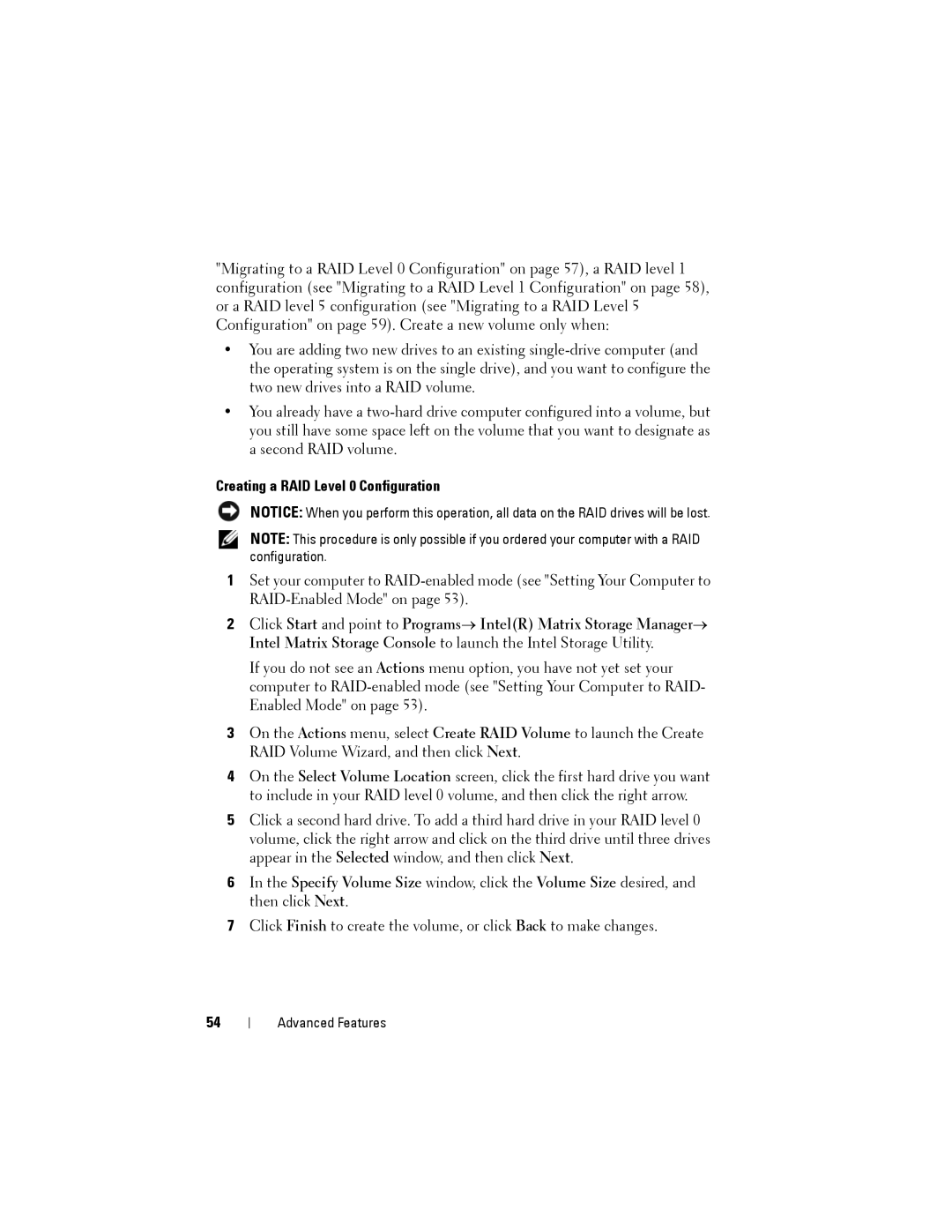"Migrating to a RAID Level 0 Configuration" on page 57), a RAID level 1 configuration (see "Migrating to a RAID Level 1 Configuration" on page 58), or a RAID level 5 configuration (see "Migrating to a RAID Level 5 Configuration" on page 59). Create a new volume only when:
•You are adding two new drives to an existing
•You already have a
Creating a RAID Level 0 Configuration
NOTICE: When you perform this operation, all data on the RAID drives will be lost.
NOTE: This procedure is only possible if you ordered your computer with a RAID configuration.
1Set your computer to
2Click Start and point to Programs→ Intel(R) Matrix Storage Manager→ Intel Matrix Storage Console to launch the Intel Storage Utility.
If you do not see an Actions menu option, you have not yet set your computer to
3On the Actions menu, select Create RAID Volume to launch the Create RAID Volume Wizard, and then click Next.
4On the Select Volume Location screen, click the first hard drive you want to include in your RAID level 0 volume, and then click the right arrow.
5Click a second hard drive. To add a third hard drive in your RAID level 0 volume, click the right arrow and click on the third drive until three drives appear in the Selected window, and then click Next.
6In the Specify Volume Size window, click the Volume Size desired, and then click Next.
7Click Finish to create the volume, or click Back to make changes.
54
Advanced Features
